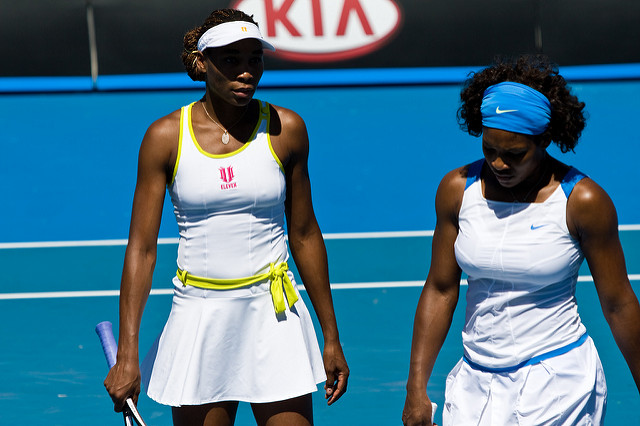-
4-minute read
-
15th June 2017
Grammar Tips: The Present Tense
Many people find tense a confusing part of grammar. But the present tense is essential to clarity in writing, so you need to know how it works. There are several present tense forms, too, as we will explain via a series of tennis examples.

(Photo: nike159)
Simple Present
The simple present is the basic form of the present tense. We use it to describe:
- A current fact (e.g. I like tennis.)
- When something is always true (e.g. Tennis balls are round.)
- When something happens regularly (e.g. Rafael Nadal always wins.)
- Something that will happen at a fixed time in the future (e.g. Wimbledon starts in July.)
As shown above, the verb form used in the present tense depends on grammatical person. Usually, the base verb is correct. But in the third person, an ‘s’ is added:
- First person: I like tennis.
- Second person: You like tennis.
- Third person: Everyone likes tennis!

(Photo: ErikaWittlieb)
Present Progressive
We use the present progressive tense to describe ongoing actions, such as in:
I am playing tennis doubles with Nadal, and we are winning!
As shown above, in the first person, the present progressive tense combines the helping verb ‘am’ (singular) or ‘are’ (plural) with a present participle (i.e. an ‘-ing’ verb).
The only difference in the third person is that ‘is’ is used for singular subjects:
Nadal is playing better than I am, admittedly.

(Photo: brett marlow/flickr)
Present Perfect
We use the present perfect for two things:
- Describing something that began in the past but continues to apply in the present (e.g. Tennis has enthralled crowds for decades)
- Describing an action that was completed at an unspecified point in the past (e.g. We have played at Wimbledon tennis club)
In this tense, the helping verbs ‘have’ and ‘has’ are combined with a past participle:
Find this useful?
Subscribe to our newsletter and get writing tips from our editors straight to your inbox.
Subscribe to Beyond the Margins and get your monthly fix of editorial strategy, workflow tips, and real-world examples from content leaders.
I have played tennis since I was ten, and Serena has played for even longer.
There is a slight difference between first and third person here, too:
- First/second person (singular): You have played tennis since childhood.
- First/second person (plural): We have loved tennis for as long as we can remember.
- Third person (singular): Venus has won dozens of tennis tournaments.
- Third person (plural): The Williams sisters have dominated tennis for over a decade.
You might notice that ‘won’ doesn’t end ‘-ed’ like the other past participles here. This is because it’s an irregular verb. This makes it vital to check the verb form when using the present perfect.

(Photo: Julie Edgley/flickr)
Present Perfect Progressive
Finally, we have the present perfect progressive tense (also known as the present perfect continuous tense). Like the present perfect, you can use the present perfect progressive to describe something that began in the past and continues in the present:
I have been playing tennis for hours, so I need a rest.
The difference is that the focus here is on the action rather than the result, which we show by using an extra helping verb (‘been’). You can also use it when something has recently ended:
Nadal has been playing well lately, so this loss is a surprise.
It might seem strange to use the present tense for something that has ended, but the present perfect progressive is only used this way when describing something that is relevant to the present (e.g. as above, to set the background for saying the loss is surprising).
And with that, we finish our quick tour of the present tense. Now, anyone up for a game of tennis?





